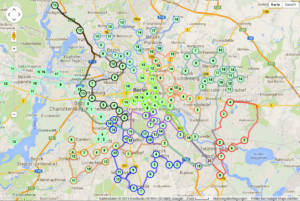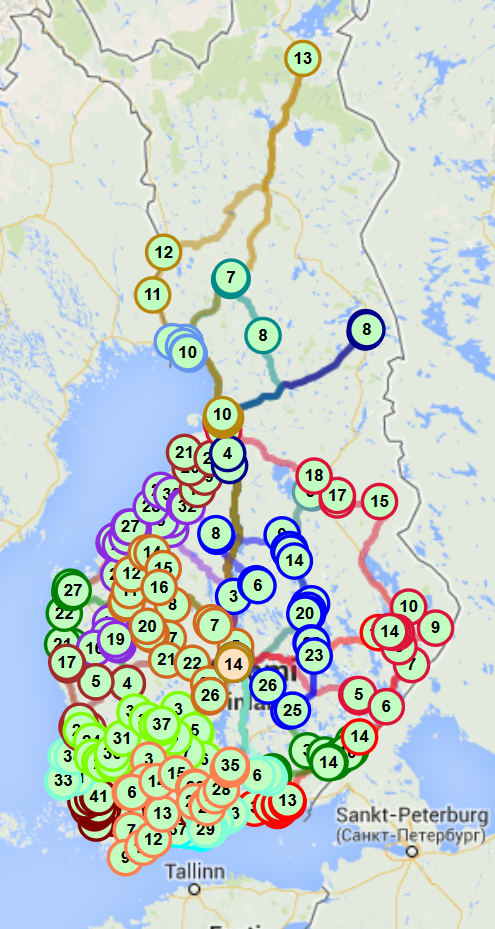ROUTE OPTIMISATION
Optimisation has been a topic of discussion for decades, but only recent developments in computing have made the efficient solving of real-life transport problems possible. The idea of optimisation in LogiApps is very simple: orders and pickup and delivery addresses are combined with the available vehicles which are then routed for maximum efficiency. The optimisation process supports several types of constraints: order time windows, vehicle capacities and schedules, vehicle and order compatibility, and cargo loading and unloading times. The algorithm also takes into account the driver’s breaks.
The principle of optimisation

The initial information can be uploaded into LogiApps either from Excel or by selecting a group of existing orders in LogiApps. Before starting the optimisation process, the order and address information can be reviewed and corrected with ease, if necessary. For example, the program highlights the addresses considered candidates for further verification.;
The optimisation process computes the optimal driving plans in only a few minutes, depending on the number of orders. The new plan can be modified, the order and vehicle properties editedand the optimisation then restarted. This allows the effect of time windows and vehicle capacities to be seen immediately. In addition, each route can be modified separately.
The goal of the optimisation can be to minimise the distances of the routes or the total driving costs. It is possible to specify kilometre and time costs for each vehicle and the algorithm will use the values to calculate routes that minimise the total driving costs.
When the transport planner is satisfied with the optimised result, the route can be sent to the planning calendar and further into the driver’s Android smartphone or tablet. During driving the driver can mark each route point as visited, including the delivery arrival and departure times. This information is sent back to the office in real time.
Benefits of optimisation
The benefits from optimisation are not limited to only cost savings in driving distances and times. Optimisation also helps planning, increases the usage of fleet capacity and improves the service quality of the company. Naturally, automated transport optimisation does not replace the professional skills of a transport planner. However, optimisation is a good and easy-to-use tool, which helps planning and saves time.
When all parameters are in place, the transport plans generated using optimisation are at least as good as the ones designed manually. There are often also additional savings in the driving costs and, in some instances, also in fixed costs.
Optimization makes it possible to test the effect of different time windows and fleet configurations in the general plan quickly and with minimal effort. It is also possible to compare manually and automatically generated plans so that the planner can immediately see the effect of optimisation.
Digital map
It is very important that the digital map for the route optimisation algorithm is of high quality and up to date. The road network should be complete with speed and weight limits for each road. LogiApps route optimization uses PTV Group’s digital maps.
PTV Group is one of the leading European software companies offering products and services in logistics optimisation and geographical solutions.
Using Route Optimisation

Automatic route optimisation can be applied in cases where a vehicle has multiple stops during the route. Examples of application areas include:
- Small package delivery
- Transport of bakery products
- Grocery home delivery
- Meal delivery service
- Home care or senior citizen services
- Waste collection vehicles
- School transports